 The world of Rastafari has come into increasing awareness, investigation and question as we dawn into the information age, and the many cultures of the world become globalized. The popularity of its native son Bob Marley has many of us asking, what is it? What propelled Bob into his faith and how did his faith tie into his mystique and his prophetic-like mannerisms?
The world of Rastafari has come into increasing awareness, investigation and question as we dawn into the information age, and the many cultures of the world become globalized. The popularity of its native son Bob Marley has many of us asking, what is it? What propelled Bob into his faith and how did his faith tie into his mystique and his prophetic-like mannerisms?
Despite what many people think they know about Rastafarians, it is fair to say, there are many misconceptions. Many are bent on calling any person with dreadlocks, or anyone who lives apart from the rest of society a Rasta. Reggae musicians, weed smokers and Jamaican patois talkers are also lumped together under the Rast afarian umbrella. Clearly those external references only create a more disillusioned understanding and unidentifiable characteristic of Rastafarians. For anyone to call themselves Rasta, one of the most important tasks one must do is study. Unlike other religions where all one has to do is accept the doctrine as truth without study, or study without changing behavior to be accepted, to live as a Rasta, one must study the doctrine, the diet, the laws and the strict codes that adhere to the faith. It is, after all, seen as a way of life rather than a religion. Since each individual has his/her own personal relationship with God, there are very few churches, synagogues, or places of worship that are identifiably Rasta, however there are means that Rastafarians use to congregate and engage in spiritual communion.
For Rastafarians, worship goes beyond the spirit of man, and incorporates the spirit of all living things. Creation is seen as the epitome of Jah (the name of the Supreme Being) and there is the idea that Jah never dies, he only expresses and manifests himself in different carnations. Therefore, the divinity of life in man is not seen merely in his earthly existence, but while he exists on earth, he must adhere to the laws of the earth, be at one with the earth and live in harmony with others. When these things are done, his life has gained purpose, and he has thus created a harmony within himself uniting his divine self with his lower self, and can do work in the mystics, in the arts, in the sciences to further humanity.
Entirely too many people are caught up on the concept of whether Tafari Makonnen, also known as His Imperial Majesty Haile Selassie I, was Christ, and whether he was or was not the returning Messiah in the flesh. To many people, it is necessary to belittle King Selessie’s role and influence on the Rastafarians and pronounce his faults and deeds as testament that he was not. Tafari Makonnen or Ras (meaning “King”) Tafari took the coronation name King Negus Negusta in 1930, and when he took the throne as king he became Emperor Haile Selassie I, as well as the traditional titles “King of Kings, Lord of Lords, Conquering Lion of the Tribe of Judah.”
At the time of the coronation, there was a mounting political pressure in Jamaica for an independence movement. Marcus Garvey, the Jamaican statesman, whose stature, position and organization appealed to the masses and referenced the coming of a black king. As all these events culminated, it was evident to enough people that these were events of biblical proportions, and prophetic reality. References such as Revelations 19:16, “he has a name written on his cloak and on his thigh, King of Kings, and Lord of Lords”, Rev. 5:2-5, “And I saw an angel proclaiming with a loud voice, Who is worthy to open the book and loose the seals thereof? And no man in heaven, neither under the earth, was able to open the book, neither to look thereon. And I wept much…. and one of the elders said unto me, Weep not: behold, the Lion of the tribe of Judah, the root of David had prevailed to open the book and to loose the seals thereof.”
The movement as a whole used many biblical references and this ideology to free themselves. Meanwhile colonialism and post slavery conditions were primary tools used to convince African people in the Caribbean that the only God they had was a white skinned, blue eyed, blond headed deity that could save them from all their sins. His Majesty, as he was affectionately called, gave African people that were deeply seeking their own refuge from the mental, psychological and spiritual slavery had pervaded many generations, a sense of identity. For many Jamaicans it was impossible to trace where exactly they had come from, what tribe, what land, what language, thus creating a lost civilization or tribe that was forced under brutal conditions to a new land. Thus followers of this ideal adopted Selassie’s pre-coronation name and called themselves Ras (which means head) Tafarians (which means peace). Ethiopia also signified something personally gratifying as well, as the oldest and only country in Africa that had crushed a colonial-fascist empire (Italy), and remained un-colonized. Ethiopia is seen as Zion, the repatriating home for Rastas when the time comes for them to return. It was a culminating range of ideas, consciousness and economic realities that shaped this new and emerging sub culture of Jamaica. Born out of the harshness of slavery into the poverty of neo-colonialism, and the sweltering resentment of blackness perpetuated that a divine authority was seeing to the justice that the lost tribe of Judah was due.
Though many Ethiopians denounce Selassie as a divine entity, and the Rastafarians, many have had no choice but to also look deeply into what the Rastas are saying and how they identify with Ethiopia as also being their homeland. Rastafarians even use the same flag colors of Ethiopia as a symbol of their alignment, red for the blood, gold for the minerals & resources and green for the land. To many Africans who know nothing about Ethiopia, their first introduction and history of the country tends to come from Rastafarians, who reference the country, Haile Selassie, and the Solomonic dynasty as the throne of their redemption.
King Solomon and Queen Sheba are highly respected figures in Rastafarian doctrine, whose son Menelik received the spiritual incarnation to carry the Ark of the Covenant back to Ethiopia, the most revered and divine institution of Christianity. King Solomon comes from the lineage of King David, and Jesus the Nazarene, who is also said to be a descendant of King David. Haile Selassie was guarded by being in this bloodline and thus fulfills spiritual prophecy when he was crowned King in 1930. In 1966 when Jamaica received its independence from British rule, Selassie’s visit to the tiny island marked another important and prophetic milestone for the Rastafarian movement who held on to their beliefs and showed up in throngs to get a glimpse of the man deemed as their savior. It was an important day that many Rastas who were there could tell you of the miraculous energy that came over them. After meeting with the heads of State, Selassie did indeed spend time with Rastafarian elders and authorities, and it was said that he provisioned off a set of land for them and Africans in the west who wanted to repatriate called Shashemane. While the life and supposed death of Selassie goes undebated, it is clear his influence on Rastafari, his leadership and presence in history will forever remain as a cornerstone in the culture and ideology.
Marcus Garvey
The enormous power and influence that Jamaican-born Marcus Garvey, (b. 8/17/1887) had on the Rastafarians is prominent as Garvey’s message, philosophies and words are laced throughout the culture, still today. In Garvey’s time, Rastafari had not been established as its own entity, however Garvey’s travels, organizational abilities and pioneering efforts established a basis and a spirit for a foundation for Rastafari’s development. Garvey’s enormous fame, popularity and charismatic ability to mobilize the masses showed his prominence for greatness. His direct campaigns to unify Africa and to create a government of black rule showed a man that was not just full of ideas, but was acting on them and forming a viable means of creating his reality. When Garvey called for Africans to look toward Africa, creating the U.N.I.A. and the Negro World newspaper, Garvey’s vision was for “blacks to overcome their feelings of inferiority and build upon their own unique and evolving culture, and ultimately return to Africa to redeem their homeland and to build a future.” It was also Garvey who told his followers, “Look towards Africa for the crowning of a black king-he shall be the redeemer.” Garvey was treading on ice with the powers of the time. He was deported from America, and died obscurely in London in 1940. Garvey left a legacy that began the Rastafari movement of Jamaica and later the black power movements of the US. His writings and teachings are highly revered in Rastafari and he is looked upon as the John the Baptist of Rasta philosophy.
Dreadlocks
Like the basis of Rastafarian ideology is rooted in African tradition, so is the hairstyle known as “dreadlocks.” Originating in eastern Africa, the hairstyle was worn by warriors and different tribes in Kenya, and a hairstyle of ancient Kemet and Nubia. However in Jamaica, in a post slavery society and Eurocentric culture, the hairstyle was deemed in the early years as “dreadful” in appearance, and proved to be an immediate way to locate those who were not interested in partaking of “normal” way of life. The early dreadlocks were the first protestors of Jamaica by claiming their identity, and expressing a realized concept of the spiritual connotations that came with growing the hair unadulterated without any chemicals or sharp objects. Upon accepting the Nazerite Vow, one becomes a Nazarene and is separated from the “world” but lives closer to God. The vow consists of not cutting the hair and other strict dietary laws to maintain a healthful state of mind and body. For the Rastas to be black, dreaded and bearded was a more realistic image of Yeshua the Christ.
Dreadlocks in the early years of the 1940s through the 1970s, were almost always synonymous with Rastafarians. By that time they had developed a social organization, and were known for their militant stance against the oppressive system that opposed their philosophy and lifestyle. This was the ultimate expression for them of the true self, and a mirror image of the symbolic Lion of Judah ideology. The lion is a humble animal, yet the most feared in the animal kingdom. The qualities of this animal were given royal status as “king” and represents the ferocious strength, power and peacefulness of the creature. In those days, Rastas received heavy persecution just for being who they were. Without having committed a crime, Rastas were brutalized, mistreated and detained by the police, often cutting off their locks in front of others and making an example out of them. Today, many who have dreadlocks as a casual hairstyle know very little about the origins of dreadlocks in Jamaica and how they were worn as a political and religious statement against “the establishment.” Many were sacrificed just to have the right to wear their locks as they saw fit. These persecutions made Rastafarians move further into the “bush” areas to maintain their lifestyle without constant threat of police brutality.
Ganja
Contrast to popular belief, ganja, or marijuana was not seen or used as a mere social drug to intoxicate or derail the senses. The Rastafarian use of marijuana stemmed from a ritualistic and spiritual expression of life. The plant and its properties allowed Rastas to gain clairvoyance, atonement and wisdom. Ganja was exported from India in the late 1800s as Indians became indentured servants and migrants to the island. Its use dates back thousands of years before Christ by the Indians. The Jamaican climate provided a lush, fertile and perfect environment for growing and harvesting the plant, and has since remained a staple in Jamaican agriculture.
Despite it being outlawed during British rule, Rastas cultivated, maintained and sold the herb for financial support. For Rastas, the plant has many medicinal purposes and has a cultural and spiritual use that allows the mind to reach a less conditioned state and relate with the divine state of life. Unlike western culture that uses marijuana solely as a social drug or to cause loose and silly behavior, Rastas use marijuana very seriously for Nyabinghi sessions to “reason” and gain a serious tuning with the forces of life, among other rituals. Silliness and loose behavior is deemed disrespectful and irresponsible when using the herb. To ensure “society’s laws,” police and the government had taken many steps to destroy the plants and arrest and detain Rastas that were found carrying any amount of herb on them. These were and continue to be trying times for Rastas who have fought for the legalization and cultivation of the herb. Its uses have far outweighed its vices for Rastas, who feel they have the religious right to smoke and use the herb to their discretion. Despite the pervasive use of marijuana in Rasta culture, there are many who do not smoke at all yet overstand the plant and its many uses. Sadly, many get stereotyped into this image, and it is not always so. The false stereotype of Rastafarians smoking herb, growing dreadlocks and carrying less than productive lives are incorrect depictions and create a false image and idea as to what the lifestyle is really about. Besides cultivating marijuana, many Rastas are farmers, and agriculturalists and maintain a wide variety of herbs, plants and have great knowledge of their many uses. Marijuana gets singled out, because it’s “illegal” but more importantly because of the social, spiritual awareness that it awakens in man.
Nyabinghi
Nyabinghi was a Ugandan movement from the 19th century that supported the idea of “death to the black and white downpressors.” It has been said that a queen of the same name, Queen Nyavingi, who fought against the colonialists, once ruled the area in Uganda. The word was carried over slave ships to the Caribbean and in the formation of organizing Rastafarians was titled as the Theocratic Priesthood and Livity Order of Nyabinghi, a sect or order of Rastafari. Nyabinghi has a wide variety of meanings: for one it describes various sects of Rastafarians and secondly Nyabinghi celebrations are communal gatherings. Third, it is an early type of Rasta music, organic and indigenous to Jamaica’s reggae influence. Nyabinghis culminate all of these meanings into a ceremony, not necessarily given at any particular time for a particular purpose, sometimes, Binghis are held as they are called by the Theocratic Order or by Rastas who feel the need to congregate and give praises to the Most High, other times they are held to commemorate Haile Selassie’s birth, and his coronation as crowned King of Ethiopia. Binghis are held at the discretion of the members who feel the need to become a spiritual force and evoke the presence of righteousness and justice on the Earth.
Language
As the movement of Rastafarians became more distinct, Rastas inherited and formed their own language. While the widely known fluid dialect of Patois is known-African in rhythm and English in interpretation, Rastas took the diction of Patois and English and formed their own translations, meanings and words. It was necessary for Rastas to use a language that was inclusive, positive and uplifting to the mind. English words connoted backward, negative and often evil thoughts and ideas. Words are living entities and have power by effecting the way one thinks, sees, hears and receives enlightenment. Instead of saying we, our, mine, you and I, Rasta affirms I’n’I, leaving no separation in the identity of things. Instead of saying “understand,” Rastas say “overstand,” as to not be under anyone’s definitions. Instead of saying “dedicated,” Rastas say “livicated,” (using the prefix live instead of die). Instead of saying “manifested,” Rastas say “I-nifested,” to incarnate the I is in everything. Foods are also given new meaning, as “ital,” for “vital,” means a strictly vegetarian diet, “Inana,” is banana, “I-go” is a mango. The I is the spirit of Jah and the spirit of man, and the unification of that divinity. Many Rasta words begin with I and many words also project a positive twist to a word to give it a higher meaning than its regular English comparison instead of “hello,” Rastas either say “greetings,” or “irie.” This language would be called the Kings Iyriac, to distinguish from the British English, which is seen in the culture as Babylonian, and causing all the negative problems in the world.
Women
The role of women in Rastafari has been a complex, yet orderly system of knowing one’s place. Though man is seen as the head of the home, and of his community, women in Rastafari are greatly respected as queens, and their duty is to raise their children and provide a stable community for the men. By teaching health, nutrition, and various elements of life, women contribute greatly to Rasta culture. Though the rules for women seem strict, a Rasta woman has to be able to tell herself apart from the larger society of women in Babylon whose ways, style of dress, and approach to life is all together different. Rasta women realize their potential as queens and honor that title with respect: no short dresses, no pants, no adding chemicals to the hair, and definitely no make up or artificial cosmetic use. Rasta women maintain a sense of identity with nature, their community and their children. The faith requires women to know their place when they are amongst men, while being as wise as any man. In Rasta culture women are not geared into vanity, and are frowned upon when it comes to exploiting their bodies. This exploitation destroys the great potential that women have to become leaders, and becoming closer to God. You can’t travel two roads and expect to get to Jah. You have to travel the narrow road, and for women in Rastafari, this is often not easy. For the temptations of western society that says a woman can dress any way, show her flesh, she can talk any kind of way, and use obscene words to express herself, or she can denounce her community and her children for vanity are misleading concepts that tear the nation apart. The Rasta woman is the holder of the nation, and her awareness of this allows her to live a simple lifestyle while upholding her duties as a woman; she is always revered for that.
It is safe to say that women who recognize Rastafari as their faith do not have to be told what to do, but have learned what works for them. It’s unimaginable that every woman will adhere to every single law of the culture but it is imaginable that Rastafarian women have found a faith that brings them closer to Jah, and binds them to uplifting themselves toward positive I-spirations.
Diet
The mainstay of Rastafarian diet has a lot to do with laws that are innately divine to man’s nature. The prohibition of many foods and the strict dietary laws that Rastas are known to have keep in tune with many biblical references to stay clean, healthy and unpolluted. Rastas often use herbs for medicinal purposes, to strengthen, heal and cleanse the body. They refrain from eating red meat, pork, chicken, fish (for some), eggs, cheese, white flour products and processed foods. The purpose is to keep a dietary law that is more in harmony with the Earth. It also is to keep them from digesting any part of blood of animals or their flesh, allowing a more human quality to always be present in man instead of the animal/flesh driven passions that pervade western culture.
Reggae
Since the early sixties, Jamaica has produced some of the most stellar music and artists in the world. Out of the constant struggle for independence, survival and truth, reggae music emerged–a music that has its roots in R&B, Rock Steady and Mento. However, reggae was a force with which to be reckoned because of its political messages.
Music was seen as a way of staying out of trouble, and not getting caught up in the “rude boy” lifestyle that led to violence, jail or death. The Rasta impact on reggae music would cover a book, but it is clear that the influence of the elders and the teachers of the faith deeply influenced artists who were seeking to distinguish themselves in a business that faded artists out as quickly as they made a hit. For many of these artists, being poor was a daily reality and it became a necessity to address it instead of creating escapist music to deal with it. Rastas, in the early years, were forbidden in many studios and were not allowed to express their creativity. But all that would change as the movement of Rastafari became more appealing to young aspiring singers and musicians, and the voice of Rasta began to take over reggae music.
Rastafarian’s native son, Bob Marley would change the direction in which Reggae was destined to go, and his talent and inspiration created an overwhelming international market that suddenly became interested in Rasta culture, ideology and Jamaica. From the time of Marley’s sudden death in 1981, the world would forever know about Rastafari, and would be intrigued and inspired by reggae and its powerful artistry. The list of artists that contributed to this great music of this unprecedented era include the original Wailers, Bunny Wailer, Peter Tosh, Junior Braithwaite, Ras Michael & the Sons of Negus, Yabby You & the Prophets, Michael Rose, Junior Byles, Big Youth, The Abyssinians, The Ethiopians, The Pioneers, Augustus Pablo, The Congos, Lee Scratch Perry, The Mighty Diamonds, Horace Andy, Alton Ellis, Dennis Brown, Prince Far I, U Roy, I Roy, David Jahson, Johnny Clarke, and a host of others whose works and names would fill the books. Reggae music, as a genre, has gone through many phases and changes as the modern era approached, however, the 70s will always be remembered as the “golden era” of the music because of its content, intensely rich and vibrant harmonies, melodies and creative sound. The reggae music of the 1970s was deeply influenced by Rastafari, and remains to this day some of the best work to come out of the island.
Future
The future of Rastafari, like any group, rests on its youth and their distinct relations with their elders. The elders of Rastafari have been the backbone of the culture since its inception, and have led a strong force around the globe teaching the works, mysteries and divine theories of Haile Selassie, Jesus Christ, and most notably, Jah. It’s not important whether one believes in Haile Selassie, as it is important for one to know. Salvation rests in one’s own known destiny with Jah. For Rasta’s sacred forward movement, the elders have always been the most instrumental influence on the young generation and their inspiration to spread the message. Since Rastas don’t consider Rastafari to be a religion, political group, or social campaign, their plight remains illusive, yet straightforward. It is obvious that Rasta culture is no longer a Jamaican ideal, but has now gained international intrigue and followers. Everywhere there are social injustices, there will be a Rastafarian sense of purpose to correct those wrongs through a divine force.
It is also important for Rastas to find their rest and dwelling–a place that they can ultimately raise their youth, protect their elders and have a communal way of life where dependence, self determination and unity are identifiable. It is the ultimate goal to see the total unification of Africa.
To truly identify Rastafari, one should never check the external dress of an individual but s/he should always check for the heart.
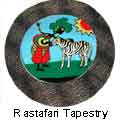
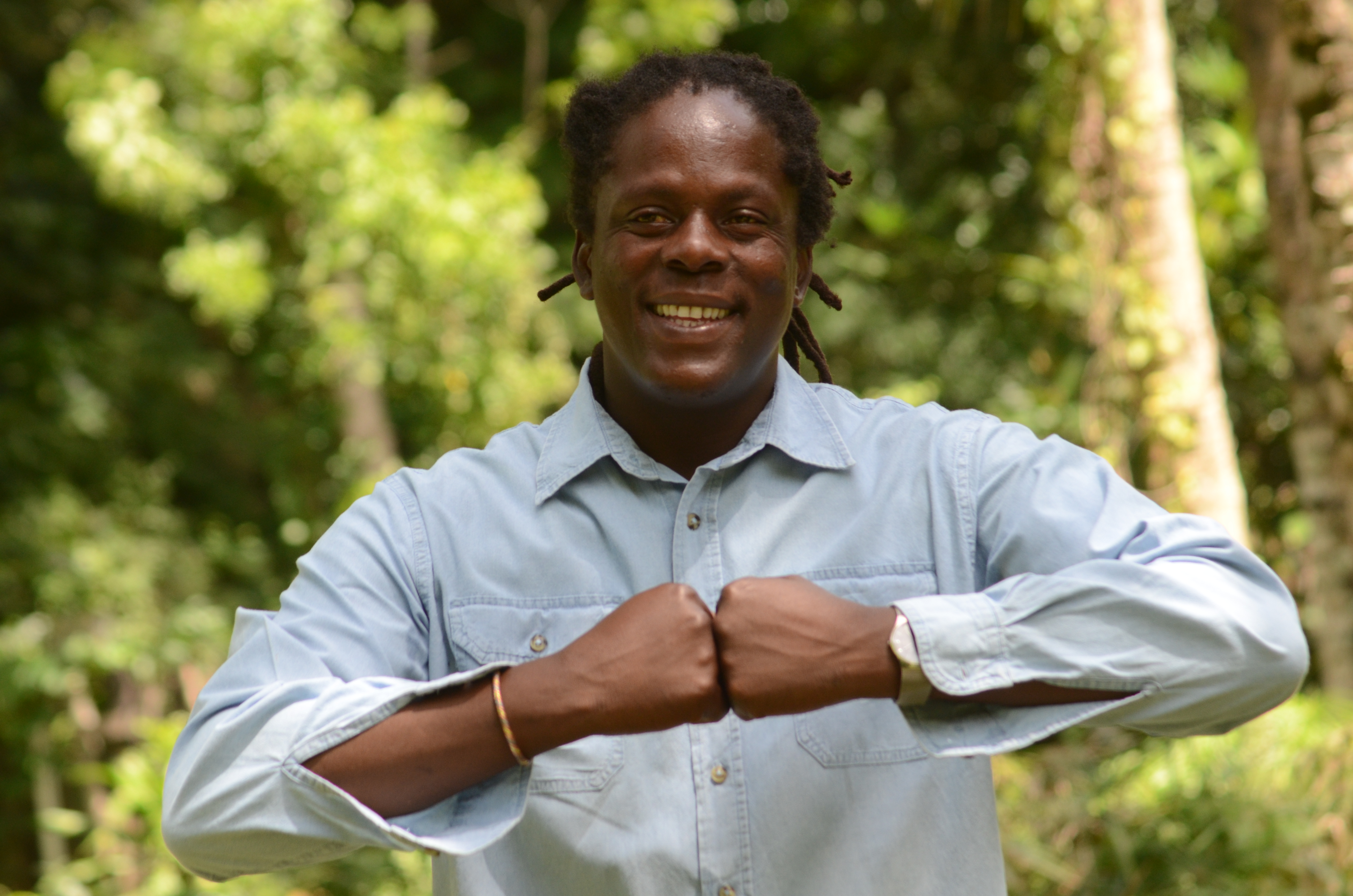
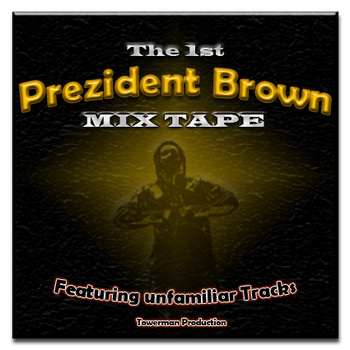
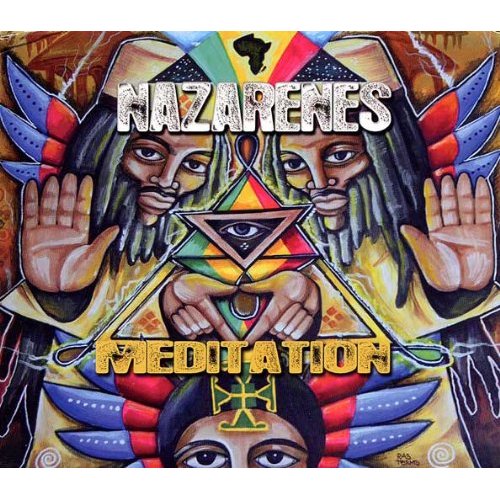
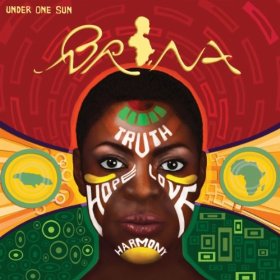
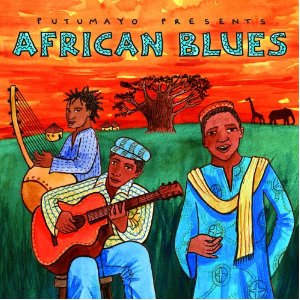

19 comments
Cynthia Molina says:
Oct 1, 2012
I Think This Way Of Life Is A Beautiful And Pure One. Everyone Should Live Life As Beautiful As A Rastafarian. Respect.
Tammy says:
Nov 4, 2012
Yes, I think that it is a beautiful way of life. I am starting my studies.
Fonzie Shickich says:
Jan 1, 2013
I love everything Rasta and i want to live a healthy diet and let my hair grow into locks, Rasta Love withinside out. Bless(ed).
İnubiya Marsha says:
Feb 17, 2013
Great article, still Rasta Empresses observe certain dress codes. The whole point of being a Rasta is to “seperate” SELF from Babylon. There is a distinct way of dressing fro the Rasta Empress, check the I-Threes when they were singing with Marley in the days. We must be regal and we can be fashionable too, but with class and dignity. The outward dress is just as important as the innerSELF
john says:
May 1, 2013
i think the Rasta way of life should be taught to everyone ,it could help to stop all the problems of humanity, i want to be Rasta ,but i don’t know how to become Rasta
Julia says:
Aug 15, 2013
I have started to live like a rasta, and it is the best thing I have ever done in my Life, my friends don’t understand why, so I am trying to explain for them and I also explained to my mother and now she is starting to live her Life like a rasta to. So right now I’m very happy, Thank you Jah and King Selassie
berlin chitiki says:
Oct 5, 2013
yes aya onelove
natty dread says:
Oct 2, 2014
Rastafari InI WAY OF LIFE,WE HAFFI TEACH DI WORLD BOUT RASTAFARI
Anonymous says:
Mar 13, 2015
I thought your post was well written and outlined the truth of Rastafari. Blessed.
Emon the rasta says:
Dec 1, 2015
Very good outline there are no papers to sign or people to talk to its all about heart and knowledge and a love for everyone but mostly thinking differently from the common man never be ignorant yea jah bless you people one love
Anonymous says:
Jul 2, 2016
I think it is a beautiful thing. But can white people become rasta?
Sistah Athene says:
Jan 8, 2017
Rastafari is the best life.Trodding the life of Jah Rastafari is an honor and privilege..and I am doing it with pride and dignity..Rastafari is Love,Love for all mankind..Nothing can ever come between HIM and me..coz when Rastafari is in your heart then nothing can stand in your way..Trodding Jah road and never get tired..Blessed Love for all..Selah
Mike says:
Jan 12, 2017
This made a lot of sense.
Dorcas says:
Mar 18, 2017
The kind of fulfilling I needed this morning..
Jah Bless
Bobba says:
May 28, 2017
Livity
Franklin says:
Jun 13, 2017
Just live life in love an inity an our happiness will bring everybody.1 love, JAH live
Demi says:
Sep 9, 2017
Rastafarian way of life is the only way.
Kelso says:
Oct 4, 2017
I think everyone should live like a rasta.This way of life is beautiful. Bring peace pon the world .I want to become a rasta but and I need guidance.
merchaw says:
Aug 31, 2018
i love to be part of you guys.